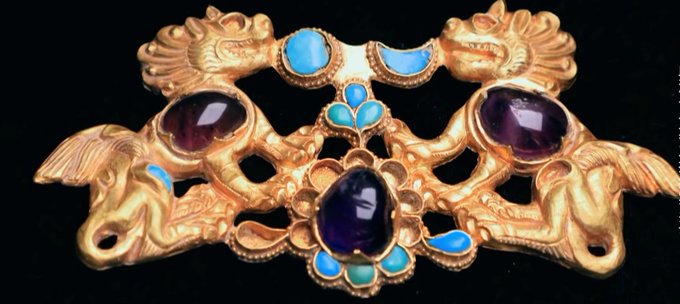A stunningly glazed horse of the Tang dynasty (8th c AD), from the collection of Liang Sicheng & Lin Huiyin, a famed couple and pioneers of the history of Chinese art and architecture. It's a Central Asian horse. But no one should be surprised if a heavenly horse looks like this.
@FairbankCenter Thank you for the initiative!! I'm an art historian at Vassar College, interested in the Silk Road and preparing a book manuscript on the art of Sogdian immigrants from Central Asia in 6th-c China. My first article on this subject can be found here: https://t.co/wRG1wMkNOC
18th-c painting of Manchu emperor Qianlong hunting a Manchurian/Amur tiger, by Giuseppe Castiglione, a Jesuit missionary who failed to convert the emperor but became his favorite court painter. Just ordered this lovely stamp of the now endangered big cat: https://t.co/WH04tv9N7X
Indeed, just because a painter claims himself a Buddhist in the inscription doesn't mean it's a Buddhist work. Here's a beauty by Zhang Daqian, the best imitator of Shitao, who blatantly puts down his title "Buddhist householder" here and copies Shitao's poem originally for lotus https://t.co/StjEO1yMOG
Another exciting discovery in 2019 is the excavation of a subsidiary tomb of the First Emperor's mausoleum. Besides bronzes & jades, it yields a gold (or gilt?) Bactrian camel, adding evidence to contacts between the First Empire of China & Central Asia through the Silk Road.
How to make sense of the juxtaposition of a quintessential Chinese tombstone & a funerary couch turned into a Sasanian-style gilt vessel? My conclusion: An Jia saw himself as a mediator between Chinese & Sasanian cultures; he celebrated this dual identity with remarkable stones.
























